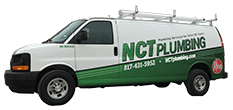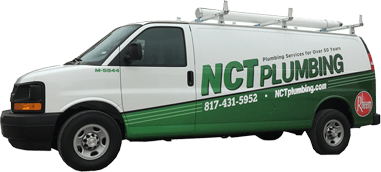Water Heater Drainage Tips
February 18th 2022
NCT Plumbing has been providing dependable plumbing services to the Dallas/Fort Worth area for over half a century. Over the years we’ve seen just about every plumbing and water heater related issue you can think of, and while our plumbing expertise began with our formal education, it didn’t end there. A lot of what we know has been learned on the job in the school of life. One of those things is this: it’s a better idea to drain your water heater before there’s a problem than have it drain itself. There are a few signs it may be a good idea to drain your water heater, including lack of hot water, discoloured water, a leaky tank, and/or a noisy water heater. We’ll go into more details on that in a future post, but for now, we want to provide you with the steps you need to go through if you want to drain your hot water tank.
1. Turn your water heater off. In order to turn it off, you must first know what type of heater it is. If it’s an electric heater, you’ll need to locate the on/off switch connecting it to electricity (often located above the heater). You’ll also need to turn off the main power, usually located on your main electric panel’s circuit breaker. If you have a gas heater you need to switch it to “pilot.” The pilot light will stay on, but the water will stop being heated.
2. Let the water cool off. Before proceeding, give the water in the tank adequate time to cool off. The amount of time needed varies depending on the size of your tank, but it’s much better to err on the side of more time than less. To be safe, give it at least a couple of hours to cool down in order to avoid potential burns or damage to nearby items where the water is being released.
3. Flush pipes. To do this you must turn off the cold water. The switch to the cold-water inlet is often located near the top of the heater. Now go to the top floor of your home and turn on a hot water tap, letting it run until all the remaining water in the pipes has been released.
4. Release pressure relief valve.
5. Once you’ve drained the water from the pipes, you must open the pressure relief valve. Don’t be concerned if it makes a hissing sound. This is normal.
6. Attach a hose to guide water to drain. You may need to drain the water into a drain outside your home or to a drain in your basement. Either way, connecting a long garden hose to the water heater is an ideal way to let the water flow. If your water heater is above ground, gravity will do the work for you, and once connected to the hose it will easily flow into the drain. If your heater is below ground you will need to purchase a small pump to connect to the hose and help it pump the water up and out of your tank. Rather than putting the water down a drain, a good idea is to lead the hose to a garden area of your home in order to make use of the water rather than wasting it.
7. Collect a water sample. Having a bucket handy will help you collect a sample of your tank’s water. This will help determine if you need to flush your tank out once it’s drained. If the water in the tank is clear and clean, you may not need to completely flush it. If there is discoloration or sediment, you need to flush it out.
8. Flushing the heater. To flush the water heater, disconnect the hose, then turn off the water tap and pressure relief valves. Then fill the water tank up with water and drain it again. It’s possible you’ll need to repeat this step a few times until all the sediment is gone. Each time you drain the tank, quickly turn on the cold-water valve, so your tank will once again fill with cold water.
9. Put it back to work. The water is clear and clean and it’s time to put it back to work for you. Remove the garden hose and turn on the pressure relief valve. Turn your gas or electricity back and turn on the cold-water valve. The tank should begin to fill up. Now you need to go back to the top floor tap you originally released the water pressure from and turn on the hot water. This will relieve back pressure within the tank and may produce more hissing or squealing sounds. Let it run until the sounds dissipate and a full stream of water is running.
Now it should be back up and running, hopefully problem-free. If you are concerned there may be a problem, need a new hot water heater, or have questions, check out our water heater services or give us a call at NCT Plumbing. While we’re chatting, be sure to ask us about tankless water heaters.

.svg)












